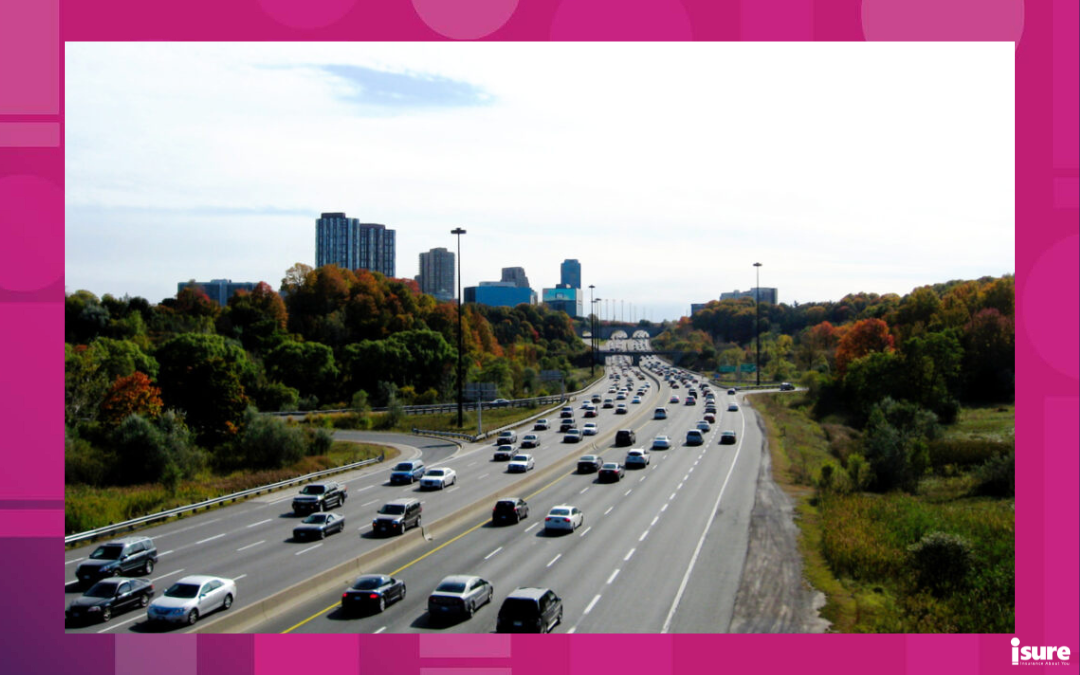When it comes to our roads, the province of Ontario puts your safety at the highest priority. Generally, most drivers have a stable idea as to what the rules of the road are, and how to keep themselves safe. However, in order to enforce the safety of others, some rules need to be put into place. This is where the Highway Traffic Act comes into play. Surprisingly, there are many drivers in Ontario who get behind the wheel without knowing what the Highway Traffic Act is. This can potentially be a huge threat to your safety and well-being. Luckily, isure is here to help! Here is everything you need to know about the Highway Traffic Act in Ontario.
What is the Highway Traffic Act?
In order to fully understand the Ontario Highway Traffic Act, we must first learn what it is! The Highway Traffic Act (HTA) is a provincial legislation regulating and classifying traffic offences. It applies to “highways,” or any type of street in the province. This includes public highways, streets, driveways, bridges and viaducts. Essentially, it applies to any road that is intended for use by the general public for the use of vehicles. The HTA gives law enforcement the right to pull you over if they believe you are committing a criminal offence on the road.
When is law enforcement authorized to pull you over?
There are two main reasons in which an officer is authorized to pull you over in violation of the Highway Traffic Act.
1. The first is to make sure you have the necessary documents that state you are allowed to be operating your vehicle. These documents include the following:
- Driver’s licence
- Other forms of identification
- Vehicle permit
- Registration
- Valid Insurance card
2. The second reason an officer may pull you over is if they believe an offence has been committed, either provincially or criminally. Some examples of this include:
- Vehicle is not deemed road worthy
- Driver is driving without care or attention
- Distracted driving (using their cellphone or other form of device, applying makeup etc.)
- Driver is behind the wheel with a suspended licence
- Speeding
- Driver is performing acts such as stunt driving or racing
- Driver is suspected to be under the influence of drugs or alcohol
- Driver has failed to remain at the scene of an accident
- Driver has failed to stop at a red light or stop sign
- Driver has failed to stop for a school bus or, in Toronto, a street car
Being charged under the Highway Traffic Act
So, what happens if you’re charged under the Highway Traffic Act? If found guilty of any of the above offences under the second option, you will likely be charged under the HTA. When pulled over and found guilty of an offence, there are two ways an officer may go about proceeding. The first will be to give you a Provincial Offence Notice, or PON. This is also known as a traffic ticket. These are generally given out when there is a fine specified for the offence you have committed.
The second way an officer may proceed is by Summoning a Defendant. This means you are to appear in court for your wrongdoing. Generally, there is no fine attached to this due to the seriousness of the offence. This can also be due to the fact that you have previous convictions for the same offence. If convicted in court, you can possibly serve jail time or a fine will be determined by the Justice of Peace.
The Highway Traffic Act is put in place for the safety of all Ontario drivers. However, only you can make sure it lives up to its full potential by obeying traffic laws and driving safely every single day. If not, you can be put at risk of paying some serious fines. Remember, if you are in the market for new insurance or want to submit a claim, contact isure or request a quote today!




